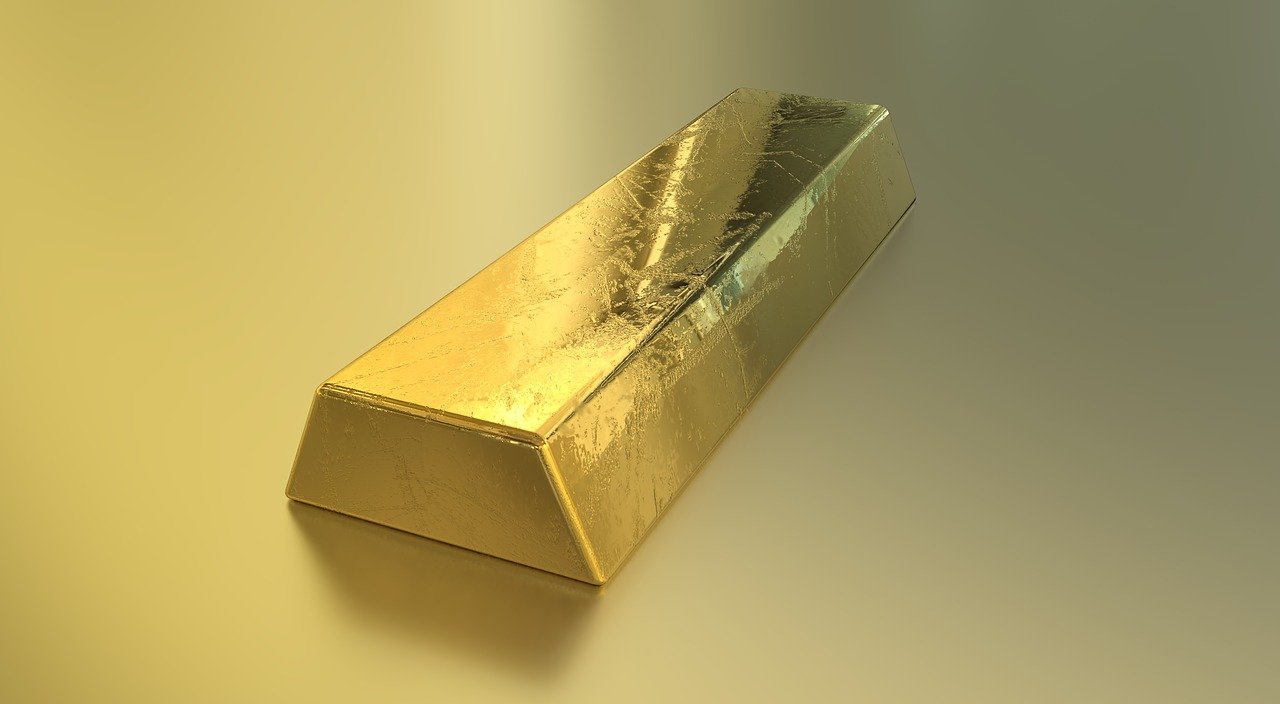Liquidating assets in a Gold IRA is a crucial process for investors looking to diversify their investment portfolios or secure their retirement savings. Whether you are a seasoned investor or new to the world of precious metals, understanding how to convert your gold holdings into cash is essential.
In this article, we will analyse Gold IRAs and the reasons and process for liquidating assets in an ira which involves several steps, from contacting your custodian to understanding the market value of your gold. Familiarizing yourself with these steps can ensure a smooth and efficient liquidation, while maximizing the returns on your investment. This article will guide you through the necessary procedures, helping you make informed decisions when the time comes to liquidate your gold assets.
What is a Gold IRA?
A Gold IRA, or Individual Retirement Account, is a self-directed retirement account that allows investors to hold physical precious metals such as gold, silver, platinum, and palladium as part of their investment portfolio. Unlike traditional IRAs, a Gold IRA offers the advantage of diversifying retirement assets into tangible, inflation-resistant assets.
- Physical Precious Metals: In a Gold IRA, investors have the opportunity to acquire physical gold, silver, platinum, and palladium, allowing for a diversified and tangible investment portfolio.
- Inflation Resistance: Gold IRAs provide a hedge against inflation, as the value of physical precious metals tends to increase during times of economic uncertainty and inflationary pressure.
- Tax Benefits: Investors can enjoy tax advantages with a Gold IRA, especially in terms of capital gains taxes and estate planning benefits.
- Security and Stability: The tangible nature of precious metals provides a sense of security and stability, making Gold IRAs a reliable option for retirement investment.
- Guidelines and Regulations: Gold IRAs are subject to specific guidelines and regulations set forth by the IRS, which ensure compliance and transparency in managing precious metal investments within retirement accounts.
Benefits of a Gold IRA
Investing in a Gold IRA provides numerous benefits that make it an attractive option for retirement planning. Here's a detailed look at the key advantages of a Gold IRA:
- Hedging Against Inflation: Gold has been historically recognized as a hedge against inflation. When the purchasing power of currency declines, the value of gold tends to increase, providing a safeguard against the eroding effects of inflation on investments.
- Portfolio Diversification: Including gold in an IRA portfolio can help diversify investment holdings, reducing overall risk. Gold often behaves differently than stocks and bonds, making it a valuable addition to a well-balanced retirement portfolio.
- Safe Haven During Economic Uncertainties: During times of economic instability or geopolitical tensions, gold tends to be a safe haven for investors. Its value can remain relatively stable or even increase when other assets are experiencing volatility.
- Tax Advantages: Gold IRAs offer tax benefits that traditional IRAs do not. Depending on individual circumstances, the tax advantages of a Gold IRA can result in significant savings over the long term.
- Potential for Long-Term Capital Appreciation: Gold has a history of long-term value appreciation. While its price may fluctuate in the short term, gold has demonstrated the potential for significant capital gains over extended periods, making it a valuable asset for retirement planning.

Rules and Regulations for Gold IRAs
Rules and Regulations for Gold IRAs
Gold IRAs are subject to specific rules and regulations set forth by the Internal Revenue Service (IRS). The IRS stipulates guidelines on the types of precious metals allowed in a Gold IRA, storage requirements, and distribution rules. It's essential for investors to familiarize themselves with these regulations to ensure compliance and maximize the benefits of a Gold IRA.
When it comes to investing in a Gold IRA, it is crucial to understand the rules and regulations put in place by the IRS. By complying with these regulations, investors can ensure the legitimacy and tax advantages of their Gold IRA investments. Below are some key details regarding the rules and regulations for Gold IRAs:
- Approved Precious Metals: The IRS specifies which types of precious metals are permitted in a Gold IRA. Approved metals include gold, silver, platinum, and palladium, each meeting specific purity standards.
- Storage Requirements: Gold IRAs require secure storage to safeguard the precious metals. Investors must store their gold with a custodian approved by the IRS, ensuring compliance with storage regulations.
- Distribution Rules: Investors should be aware of the distribution rules governing Gold IRAs. The IRS outlines regulations on the timing and requirements for distributions from a Gold IRA.
By understanding and adhering to these rules and regulations, investors can confidently benefit from the long-term security and potential growth of a Gold IRA.
Liquidating Assets Within a Gold IRA
When it comes to a Gold IRA, liquid assets refer to the range of precious metals that are easily converted into cash without significantly affecting their market value. These liquid assets provide a level of flexibility and security for investors, allowing them to capitalize on favorable market conditions or address financial needs during retirement.
Here are some examples of liquid assets in a Gold IRA:
- Gold bars and coins
- Silver bars and coins
- Platinum bars and coins
- Palladium bars and coins
It's important to understand that the liquidity of these assets is a key consideration for investors. The ability to convert these holdings into cash can play a critical role in managing financial portfolios and adapting to changing economic circumstances.
Reasons for Liquidating Assets in a Gold IRA
There are several reasons why investors may choose to liquidate assets in a Gold IRA. These reasons may include rebalancing a retirement portfolio, taking advantage of investment opportunities, or funding retirement expenses. Additionally, liquidating assets allows investors to access the value of their precious metals holdings when needed.
Requesting a Precious Metals Evaluation
When it comes to the process of liquidating assets in a Gold IRA, the initial step often involves requesting a precious metals evaluation. This step is crucial as it sets the foundation for the subsequent asset liquidation process. Requesting a precious metals evaluation requires careful consideration and adherence to specific procedures to ensure the accuracy of the valuation and the overall success of the liquidation.
Here are the key steps involved in requesting a precious metals evaluation:
- Choose a Reputable Appraiser: Selecting a reputable and experienced appraiser is essential to ensure the accuracy and fairness of the evaluation. Look for appraisers who specialize in precious metals and have a solid track record in the industry.
- Appraisal Process: The appraiser will conduct a thorough examination of the precious metals within the Gold IRA, taking into account factors such as purity, weight, and market value. This process may involve various testing methods to determine the authenticity and quality of the metals.
- Evaluation Report: Upon completion of the appraisal, the appraiser will provide a detailed evaluation report outlining the findings, including the assessed value of the metals based on the current market conditions.
- Documentation and Record-Keeping: It is essential to maintain detailed documentation of the evaluation report and any accompanying certificates or documentation. This information will be required for the subsequent stages of the asset liquidation process.
Furthermore, requesting a precious metals evaluation also offers the opportunity for investors to gain insights into the current value of their precious metal holdings, which can inform their decision-making regarding asset liquidation strategies.
By carefully following the appropriate procedures and working with reputable professionals, investors can ensure a smooth and accurate evaluation of their precious metals, setting the stage for successful asset liquidation within a Gold IRA.
Process of Liquidating Assets in a Gold IRA
The process of liquidating assets in a Gold IRA involves several important steps that investors should be aware of:
- Evaluation of Market Conditions: Before initiating the liquidation process, it is crucial to analyze the current market conditions for precious metals. Factors such as the current price of gold, silver, and other metals can significantly impact the overall liquidation strategy.
- Consultation with Financial Advisor: Investors are advised to consult their financial advisors before making any decisions regarding the liquidation of assets in a Gold IRA. This step helps in understanding the potential tax implications, withdrawal penalties, and overall financial impact.
- Selection of Precious Metals to Liquidate: Depending on the investor's portfolio and financial goals, the selection of specific precious metals for liquidation is a critical decision. It's essential to assess the market demand and liquidity of the chosen metals.
- Execution of the Liquidation Order: Once the decision regarding which assets to liquidate has been made, the investor needs to coordinate the liquidation order with the IRA custodian or authorized precious metals dealer. This process involves specifying the quantity, type of metals, and the desired selling price.
- Transfer of Funds: After the successful liquidation of assets, the transfer of funds into the investor's retirement account is executed. The speed and efficiency of this transfer are vital to ensure the seamless transition of the liquidated assets into the investor's portfolio.
Taxation of Liquidated Assets in a Gold IRA
When it comes to liquidating assets in a Gold IRA, there are important tax implications that investors need to consider. Understanding the tax treatment of liquidated assets is crucial for effective retirement planning. Here's a detailed look at the taxation of liquidated assets in a Gold IRA:
The gains from liquidating assets held in a Gold IRA may be subject to capital gains tax. The tax rate applied to the gains depends on the holding period and the investor's tax status. It's important for investors to be aware of the potential capital gains tax and plan their liquidation strategy accordingly.

Aside from capital gains tax, there are other tax considerations to keep in mind when liquidating assets in a Gold IRA. These may include state taxes, early withdrawal penalties, and any special tax rules related to precious metals. Investors should consult with a tax professional to fully understand the tax implications and ensure compliance with tax laws.
Let's consider an example scenario to illustrate the taxation of liquidated assets in a Gold IRA. Suppose an investor has held gold in their IRA for over a year and decides to liquidate the assets. The resulting gains would be subject to long-term capital gains tax, which is typically lower than short-term capital gains tax. By understanding this scenario, investors can make informed decisions about the timing and tax implications of asset liquidation.
Tax-Advantaged Options for Gold IRA Asset Liquidation
When it comes to liquidating assets in a Gold IRA, there are several tax-advantaged strategies that investors can employ to optimize their retirement income and preserve the tax efficiency of their investment holdings. These strategies are designed to minimize tax liabilities and maximize the benefits of investing in a Gold IRA. Let's explore some of the tax-advantaged strategies in detail:
- Qualified Distributions: Utilizing qualified distributions is a tax-advantaged strategy that allows investors to withdraw funds from a Gold IRA without incurring a penalty. By meeting the criteria for qualified distributions, investors can access their retirement funds while minimizing tax implications.
- Roth IRAs: Another tax-advantaged strategy involves converting a traditional Gold IRA into a Roth IRA. This conversion allows for tax-free withdrawals in retirement, providing a valuable tax-advantaged option for asset liquidation.
- Retirement Planning Tools: In addition to Roth IRAs, there are other retirement planning tools available to investors. These tools can be leveraged to strategically manage the liquidation process and minimize tax liabilities, ultimately optimizing retirement income.
By carefully considering these tax-advantaged strategies, investors can navigate the asset liquidation process with a focus on tax efficiency and long-term financial security.
Choosing a Custodian for Gold IRA Asset Liquidation
When selecting a custodian for Gold IRA asset liquidation, investors should consider the fees and charges associated with the custodial services. It's important to evaluate the fee structure, including annual maintenance fees, transaction fees, and storage fees, to ensure that the overall costs align with the investor's retirement objectives.
Custodian Reputation and Reliability
When it comes to a Gold IRA, the reputation and reliability of the custodian are paramount for the security and efficient liquidation of assets. Let's delve deeper into what factors contribute to the custodian's reputation and reliability:
- Track Record: Assessing the custodian's track record is essential. Look for a custodian with a proven history of successfully managing Gold IRAs and facilitating asset liquidation.
- Regulatory Compliance: Understanding the custodian's adherence to regulations is crucial. Ensure that the custodian is fully compliant with the IRS regulations and other industry standards.
- Customer Reviews: Reading customer reviews offers valuable insights. Look for consistent positive feedback regarding the custodian's reliability, communication, and support.
- Security Measures: Exploring the custodian's security measures is a must. The custodian should have robust security protocols in place to safeguard the assets held within the Gold IRA.
By considering these factors, investors can make an informed decision about the custodial services for their Gold IRA.
Customer Service and Support
When it comes to choosing a custodian for Gold IRA asset liquidation, customer service and support play a pivotal role in the decision-making process. A reputable custodian understands the importance of providing exceptional customer service to investors. Here are some essential factors to consider:
- Responsive Communication: A reliable custodian ensures prompt and effective communication with investors. This includes timely responses to inquiries, clear explanations of processes, and easy accessibility to customer support representatives.
- Knowledgeable Assistance: Investors should seek a custodian that offers expert guidance and support throughout the asset liquidation journey. This involves having access to knowledgeable professionals who can address complex questions and provide valuable insights into market trends and regulatory requirements.
- Secure Online Account Access: An efficient custodian provides investors with a secure online portal for managing their accounts. This user-friendly platform allows investors to monitor their assets, track transactions, and access important documents with ease and peace of mind.
- Commitment to Investor Assistance: A reputable custodian demonstrates a strong commitment to assisting investors at every step of the asset liquidation process. This includes offering educational resources, personalized guidance, and proactive support to ensure that investors feel empowered and informed throughout their investment journey.
The Bottom Line
Investors seeking to maximize the benefits of a Gold IRA should carefully consider the processes and implications of liquidating assets within their retirement account. By understanding the rules, tax considerations, and custodial factors, investors can strategically manage their precious metals holdings while safeguarding their retirement wealth.






